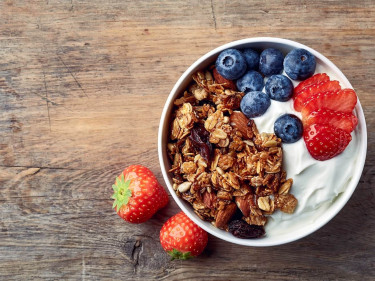Did you know that almost half of the food Aussies eat every day is ultra-processed? Yep, that’s a lot! But what exactly does “ultra-processed” mean, and why does it matter for health? Let’s break it down using the NOVA food classification system.
The NOVA Classification System
The NOVA system categorises foods into four groups based on their level of processing:
Group 1: Unprocessed or Minimally Processed Foods
These foods are in their natural state or have undergone minimal processing. These are basic foods that you could eat straight away – like fruits, and vegetables, or require minimal processing to make them more palatable - like nuts that need the shell removed, or ground herbs and spices.
Group 2: Processed Culinary Ingredients
These are substances derived from group 1 foods that are used in cooking to enhance flavour and texture. Common examples include oils, sugar, honey, and syrups like maple syrup.
Group 3: Processed Foods
This category includes foods that have undergone traditional processing methods such as canning, bottling, fermenting, or salting to extend their shelf life. Examples include canned fruits, tomato paste, cheese, salted fish, and simple breads with minimal ingredients—foods that have been around for generations and could be made in a home kitchen.
Group 4: Ultra-Processed Foods (UPFs)
UPFs are industrially produced formulations that contain additives and ingredients not commonly found in home kitchens. These foods are engineered for long shelf life and hyper-palatable flavours. Examples include biscuits, ice-cream, frozen desserts, preserved, or crumbed meats and fish, instant noodles, margarine, breakfast cereals, energy drinks, and sugar-sweetened beverages.
Does consuming UPFs affect your health?
Given that half the total energy intake in a typical Australian dietary pattern now comes from foods in NOVA group four – Ultra Processed Foods – you have to ask what affect it has on the health of Australians? Numerous studies have found an association between high consumption of UPFs with risk of developing obesity and other chronic health conditions, including high blood pressure, type 2 diabetes, and heart disease.
Why Whole Foods Matter
Let's think of your digestive system like a campfire! Whole foods—like fruits, veggies, and whole grains—are like thick logs. They burn slow and steady, giving you lasting energy. Ultra-processed foods are more like crumpled paper—quick to ignite, but gone in a flash. They leave you feeling hungry and reaching for more.

That’s why a little planning goes a long way! UPFs often sneak into your daily meals and snacks out of convenience—like when you have no lunch prepped, or you need a 3pm snack, or are scrambling for something to throw in the kid's lunchboxes! Pre-packaged foods are too easy to grab – but small swaps can make a big difference! Plan to spend some time in the kitchen, getting a bit creative and making some recipes and snacks from NMNT – muffins, fritters, scrolls, brownies –enjoy some right away, and freeze the rest – and then you’ve got stacks of snacks on hand!
By focusing on whole foods and making small, sustainable changes, you can improve your diet quality, improve your health, and fuel the household better, feel better and think better in the process!













